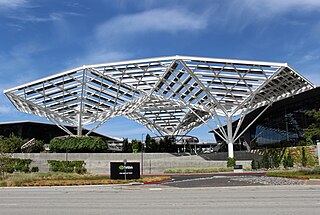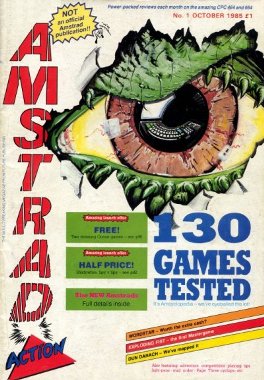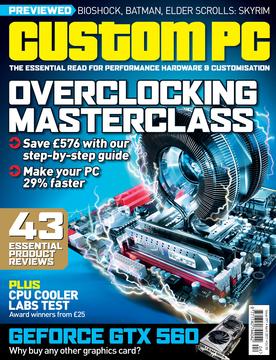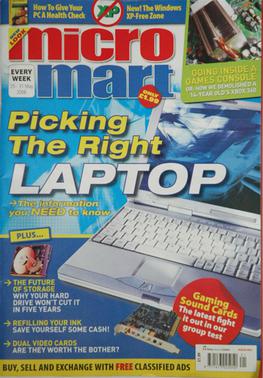
Hexen II is a dark fantasy first-person shooter (FPS) video game developed by Raven Software and published by id Software. It is the third game in the Hexen/Heretic series, and the last in the Serpent Riders trilogy. Using a modified Quake engine, it features single-player and multiplayer game modes, as well as four character classes to choose from, each with different abilities. These include the "offensive" Paladin, the "defensive" Crusader, the spell-casting Necromancer, and the stealthy Assassin.

Nvidia Corporation is an American multinational technology company incorporated in Delaware and based in Santa Clara, California. It is a software and fabless company which designs graphics processing units (GPUs), application programming interface (APIs) for data science and high-performance computing as well as system on a chip units (SoCs) for the mobile computing and automotive market. Nvidia is a dominant supplier of artificial intelligence hardware and software. Its professional line of GPUs are used in workstations for applications in such fields as architecture, engineering and construction, media and entertainment, automotive, scientific research, and manufacturing design.

Matrox Graphics, Inc. is a producer of video card components and equipment for personal computers and workstations. Based in Dorval, Quebec, Canada, it was founded in 1976 by Lorne Trottier and Branko Matić. The name is derived from "Ma" in Matić and "Tro" in Trottier.

The GeForce 256 is the original release in Nvidia's "GeForce" product-line. Announced on August 31, 1999 and released on October 11, 1999, the GeForce 256 improves on its predecessor by increasing the number of fixed pixel pipelines, offloading host geometry calculations to a hardware transform and lighting (T&L) engine, and adding hardware motion compensation for MPEG-2 video. It offered a notably large leap in 3D PC gaming performance and was the first fully Direct3D 7-compliant 3D accelerator.

Amstrad Action was a monthly magazine, published in the United Kingdom, which catered to owners of home computers from the Amstrad CPC range and later the GX4000 console.

3dfx Interactive, Inc. was an American computer hardware company headquartered in San Jose, California, founded in 1994, that specialized in the manufacturing of 3D graphics processing units, and later, video cards. It was a pioneer in the field from the late 1990s until 2000.

Released in August 1997 by Nvidia, the RIVA 128, or "NV3", was one of the first consumer graphics processing units to integrate 3D acceleration in addition to traditional 2D and video acceleration. Its name is an acronym for Real-time Interactive Video and Animation accelerator.
PC Gamer is a magazine and website founded in the United Kingdom in 1993 devoted to PC gaming and published monthly by Future plc. The magazine has several regional editions, with the UK and US editions becoming the best selling PC games magazines in their respective countries. The magazine features news on developments in the video game industry, previews of new games, and reviews of the latest popular PC games, along with other features relating to hardware, mods, "classic" games and various other topics.

AnandTech is an online computer hardware magazine owned by Future plc. It was founded in 1997 by then-14-year-old Anand Lal Shimpi, who served as CEO and editor-in-chief until August 30, 2014, with Ryan Smith replacing him as editor-in-chief. The web site is a source of hardware reviews for off-the-shelf components and exhaustive benchmarking, targeted towards computer building enthusiasts, but later expanded to cover mobile devices such as smartphones and tablets.

PC PowerPlay (PCPP) is Australia's only dedicated PC games magazine. PC PowerPlay focuses on news and reviews for upcoming and newly released games on the Microsoft Windows platform. The magazine also reviews computer hardware for use on gaming computers. The magazine is published by Future Australia.

S3 Graphics, Ltd was an American computer graphics company. The company sold the Trio, ViRGE, Savage, and Chrome series of graphics processors. Struggling against competition from 3dfx Interactive, ATI and Nvidia, it merged with hardware manufacturer Diamond Multimedia in 1999. The resulting company renamed itself to SONICblue Incorporated, and, two years later, the graphics portion was spun off into a new joint effort with VIA Technologies. The new company focused on the mobile graphics market. VIA Technologies' stake in S3 Graphics was purchased by HTC in 2011.

GamePro was an American multiplatform video game magazine media company that published online and print content covering the video game industry, video game hardware and video game software. The magazine featured content on various video game consoles, personal computers and mobile devices. GamePro Media properties included GamePro magazine and their website. The company was also a part subsidiary of the privately held International Data Group (IDG), a media, events and research technology group. The magazine and its parent publication printing the magazine went defunct in 2011, but is outlasted by Gamepro.com.

Atomic once was a monthly Australian magazine and online community that focused on computing and technology, with a great emphasis on gaming, modding and computer hardware. Atomic was marketed at technology enthusiasts and covered topics that were not normally found in mainstream PC publications, including video card and CPU overclocking, Windows registry tweaking, and programming. The magazine's strapline was 'Maximum Power Computing', reflecting the broad nature of its technology content.

Custom PC was a UK-based computer magazine originally published by Dennis Publishing Ltd and subsequently sold to Raspberry Pi Trading Ltd. It was aimed at PC hardware enthusiasts, covering topics such as modding, overclocking, and PC gaming. The first issue was released in October 2003 and it was published monthly until the final issue, number 235, was released in February 2023.
bit-tech is an online magazine for computer hardware enthusiasts, gamers and case modders, based in the UK. It was founded in 2000, became a fully professional online publication in 2005, and announced its acquisition by Dennis Publishing in October 2008. Dennis Publishing then partnered the site with existing monthly publication Custom PC magazine, making Bit-Tech the online version of the magazine. At this point the two editorial teams were totally integrated. However, due to a restructure in January 2012 the website and magazine had separate editors again, although several of the writers still contributed material to both publications. It is owned by The Media Team.

TechLife is an Australian general computer magazine, published monthly by Future Australia.

Micro Mart was a weekly computer magazine published in the United Kingdom by Dennis Publishing Ltd. As of 2015, it had a circulation of 5,422. In a letter to subscribers in December 2016 it was announced that the magazine would cease publication with issue No 1445 : "After 30 amazing years of telling it like it is, Micro Mart magazine is logging off."
Velocity Micro is a privately held boutique computer manufacturer located in Richmond, Virginia (USA), specializing in custom high-performance gaming computers, professional workstations, and high-performance computer solutions. Its extended product line includes gaming PCs, notebooks, CAD workstations, digital media creation workstations, home and home office PCs, home entertainment media centers, Tesla-based supercomputers, and business solutions. All products are custom assembled by hand and supported at the company's headquarters.
Tech Advisor, previously known as PC Advisor, is a consumer tech website and digital magazine published by Foundry, a subsidiary of International Data Group, which also produces Macworld, PC World and TechHive. IDG, Inc. was acquired by Blackstone in 2021.
HotHardware is an online publication about computer hardware, consumer electronics and related technologies, mobile computing and PC gaming. It regularly features coverage of new products and technologies from vendors including Intel, Dell, AMD, and NVIDIA. "Daily Hardware Round-ups" also offer reviews and news submitted by other technology-related sites.















